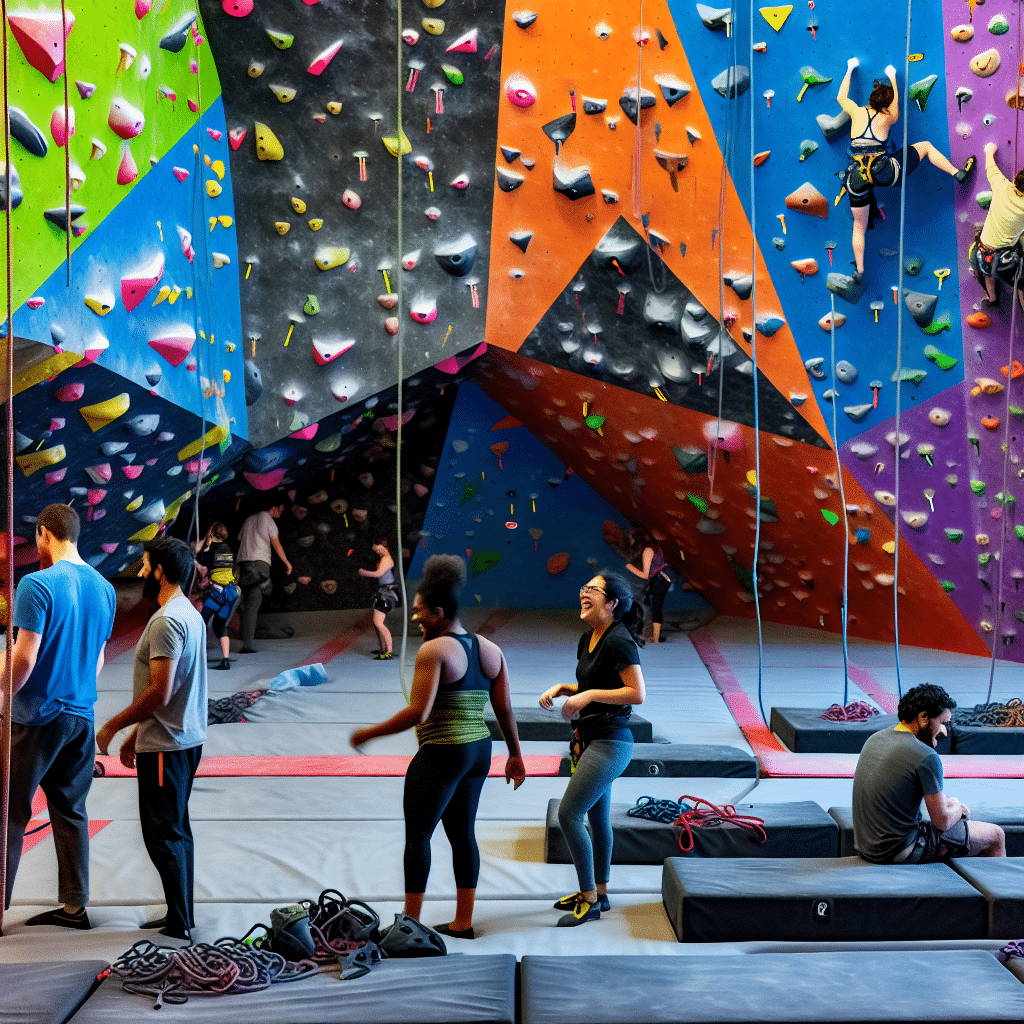Have you ever looked at a towering mountain and wondered what it would be like to scale its heights? If the idea of mountain climbing seems daunting due to natural elements or lack of nearby mountainous terrain, indoor mountain climbing provides a thrilling and accessible alternative. Whether you are an outdoor climbing enthusiast looking to train or a newcomer seeking adventure, indoor climbing offers a unique and inclusive experience.
What is Indoor Mountain Climbing?
Indoor mountain climbing involves the use of artificial climbing walls that mimic the experience of outdoor rock climbing. These walls are designed with handholds and footholds of varying shapes and sizes to create routes that challenge climbers of all skill levels. Indoor climbing facilities can be found in gyms, recreation centers, and specialized climbing studios.
The Evolution of Indoor Climbing
Indoor climbing has evolved significantly since its inception. Early climbing walls were simple structures with few routes, but modern climbing gyms now boast elaborate systems that simulate real rock formations. Advanced materials and technologies contribute to the realistic textures and holds, making indoor climbing an engaging and challenging activity.
Why Choose Indoor Mountain Climbing?
There are several compelling reasons to give indoor mountain climbing a try, whether you are a seasoned climber or a novice.
1. Accessibility
Unlike outdoor climbing, which often requires travel to remote locations, indoor climbing facilities are typically located in urban areas. This makes it easier for people to integrate climbing into their regular fitness routine without the need for extensive travel or planning.
2. Controlled Environment
Indoor climbing offers a controlled environment, free from unpredictable weather conditions and other natural hazards. This makes it a safer option for beginners and also allows more consistent training for advanced climbers.
3. Variety of Routes
Climbing walls can be adjusted to create a wide range of routes, catering to different skill levels and climbing styles. Whether you prefer bouldering, top-rope climbing, or lead climbing, there is always a new challenge to tackle.
4. Physical and Mental Benefits
Indoor mountain climbing is a full-body workout that improves strength, endurance, and flexibility. Additionally, it requires problem-solving skills and mental focus, providing cognitive benefits as well.
How to Get Started with Indoor Mountain Climbing
If you’re new to indoor mountain climbing, here are some key steps to help you get started:
1. Find a Climbing Gym
Research local climbing gyms to find one that suits your needs. Look for facilities that offer introductory classes and a variety of routes. Many gyms provide all the necessary equipment for beginners, so you can get started without making a significant investment.
2. Take an Introductory Class
Most climbing gyms offer introductory classes to teach the basics of climbing techniques, safety procedures, and equipment use. These classes are invaluable for building a strong foundation and ensuring a safe climbing experience.
3. Gear Up
While climbing gyms often provide rental gear, investing in your own equipment can enhance your climbing experience. Essential gear includes climbing shoes, a harness, and a chalk bag. As you advance, you may also consider purchasing a belay device and a rope.
4. Practice Safety
Safety is paramount in climbing. Always double-check your harness and knots, communicate clearly with your climbing partner, and follow the gym’s safety guidelines. Learning how to belay properly is crucial for those who wish to climb with a partner.
Indoor Mountain Climbing: Challenges and Triumphs
Every climbing route presents its own set of challenges, from physical obstacles to mental barriers. Overcoming these challenges is part of what makes indoor mountain climbing so rewarding.
1. Physical Challenges
Climbing requires a combination of strength, flexibility, and endurance. As you progress, you’ll find that routes become more demanding, requiring precise movements and greater physical effort.
2. Mental Challenges
Problem-solving is a key component of climbing. Each route is like a puzzle, and finding the best way to navigate it requires focus and creativity. Mental fortitude is essential, especially when facing difficult or intimidating routes.
The Climbing Community
One of the most enriching aspects of indoor mountain climbing is the vibrant and supportive climbing community. Climbing gyms are social hubs where climbers of all ages and skill levels come together to share their passion. Whether you climb solo or with a group, you’ll find camaraderie and encouragement within the climbing community.
Conclusion: Embrace the Adventure!
Indoor mountain climbing offers an exhilarating blend of physical and mental challenges in a safe and controlled environment. Whether you’re looking to boost your fitness, sharpen your problem-solving skills, or simply find a new hobby, indoor climbing has something for everyone. Step into the climbing gym, strap on your harness, and prepare to reach new heights—both literally and figuratively. Embrace the adventure of indoor mountain climbing and discover the thrill of conquering walls.




